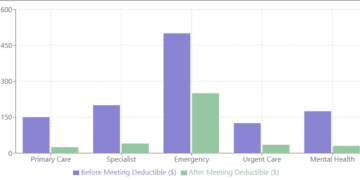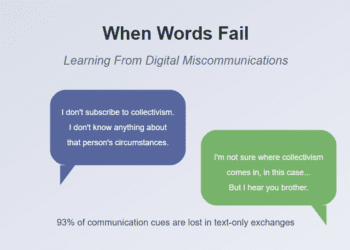In the symphony of human emotions, hope stands out as a melody that can lift us from the depths of despair to the heights of inspiration. It is a force that transcends the boundaries of time, influencing not only our present state of mind but also shaping our future. As we embark on this exploration into the intricate tapestry of hope, we unravel the psychological concept that underpins it, delve deeper into its profound influence on mental health backed by scientific evidence, explore the nuanced types of hope, and provide actionable strategies to fortify and build this remarkable force within ourselves.
Unveiling the Psychological Concept of Hope
Defining Hope: More Than Wishful Thinking
Hope, at its core, is a dynamic cognitive process that involves more than mere wishful thinking. Dr. Rick Snyder’s Hope Theory outlines it as a multi-faceted phenomenon that includes setting challenging yet attainable goals, envisioning multiple pathways to achieve those goals, and maintaining the motivation to pursue them despite obstacles. It’s a cognitive dance between agency—the will to achieve—and pathways—finding ways to achieve.
The Science Behind Hope
To truly appreciate the power of hope, we must turn to the science that underscores its significance. In a groundbreaking study published in the Journal of Positive Psychology, researchers found a compelling correlation between hope and mental health. The study revealed that individuals with higher levels of hope experienced lower levels of stress, anxiety, and depression. Hope is not merely a subjective feeling; it is a tangible force that can reshape the landscape of our mental well-being.
The Influence of Hope on Mental Health
Breaking Down the Benefits
1. Reduced Stress and Anxiety
The relationship between hope and stress is profound. When individuals maintain a hopeful outlook, they inherently possess a belief in their ability to overcome challenges. This belief acts as a shield, buffering against the harmful effects of chronic stress and anxiety.
2. Enhanced Coping Mechanisms
Hopeful individuals display a remarkable ability to cope with adversity. Resilience becomes a hallmark of their character, allowing them to bounce back from setbacks and view failures not as insurmountable obstacles but as opportunities for growth and learning.
3. Improved Mood and Well-Being
The ripple effects of hope extend to positive emotions. Embracing hope correlates with increased feelings of happiness, life satisfaction, and an overall sense of well-being. It’s not merely about surviving; it’s about thriving.
Types of Hope: A Spectrum of Positivity
1. Dispositional Hope
This type of hope reflects an individual’s general outlook on life. Those with high dispositional hope believe in their capacity to control their circumstances and influence their future positively. It’s a foundational pillar of resilience.
2. Situational Hope
Hope is not a one-size-fits-all concept. Situational hope comes to the fore in response to specific challenges or goals. It provides a targeted motivational boost, tailored to the intricacies of the moment.
3. Trait Hope
Trait hope is a stable and enduring tendency to view life with optimism. Individuals high in trait hope exhibit a positive outlook across various situations, creating a reservoir of resilience that sustains them through life’s ebbs and flows.
Finding Calm in the Midst of Drama
Life’s narrative is inherently unpredictable, peppered with unexpected plot twists and challenging chapters. In my previous blog post, “Finding Calm in the Midst of Drama,” I explored how cultivating a sense of calmness can seamlessly complement the power of hope. Calmness becomes the canvas upon which hope paints its vibrant strokes, creating a harmonious symphony even in the midst of chaos.
Actionable Ways to Strengthen and Build Hope
1. Set Realistic Goals
Hope flourishes in the fertile soil of achievable goals. Instead of reaching for the stars in a single leap, break down your aspirations into small, realistic objectives. Celebrate the incremental victories, for they contribute significantly to the overall sense of accomplishment.
2. Cultivate a Positive Mindset
Positivity is the nourishment that fuels hope. Challenge negative thoughts and reframe them in a more optimistic light. Surround yourself with positive influences, whether it be uplifting books, motivational podcasts, or the company of optimistic individuals. Engage in activities that bring you joy and contribute to a positive mental atmosphere.
3. Visualize Success
The mind is a powerful instrument. Take a few moments each day to vividly visualize yourself achieving your goals. Immerse yourself in the emotions and sensations associated with success. This mental imagery serves as a potent motivator, reinforcing the belief that success is not an elusive dream but a tangible reality within reach.
“Hope is being able to see that there is light despite all of the darkness.”
— Desmond Tutu
4. Build a Support System
Human connections are the threads that weave the fabric of hope. Surround yourself with individuals who share your goals or can provide encouragement during challenging times. Social support acts as a robust source of hope and resilience, reminding us that we are not alone on our journey.
How to Overcome a Bad Day: Finding Inspiration and Turning Things Around
Even the most hopeful individuals encounter days when the light of hope seems dim. In my guide, “How to Overcome a Bad Day: Finding Inspiration and Turning Things Around,” I delve into practical strategies for regaining a sense of hope and transforming a challenging day into an opportunity for growth. It’s a roadmap for navigating the storms, reminding us that hope is not just a fair-weather companion but a stalwart ally in the face of adversity.
The Road Ahead: Embracing a Hopeful Tomorrow
Hope is not a fleeting emotion; it’s a mindset that can be nurtured and strengthened over time. As we navigate the complexities of life, let us remember that hope is not a passive bystander but an active participant in our journey. It guides us through the darkest nights, illuminating the path to a brighter, more resilient future.
In the words of Helen Keller, “Optimism is the faith that leads to achievement. Nothing can be done without hope and confidence.” Embrace hope, cultivate optimism, and embark on a journey towards mental resilience and well-being. The road ahead may be winding, but with hope as our compass, every step becomes a testament to the indomitable human spirit.
















































